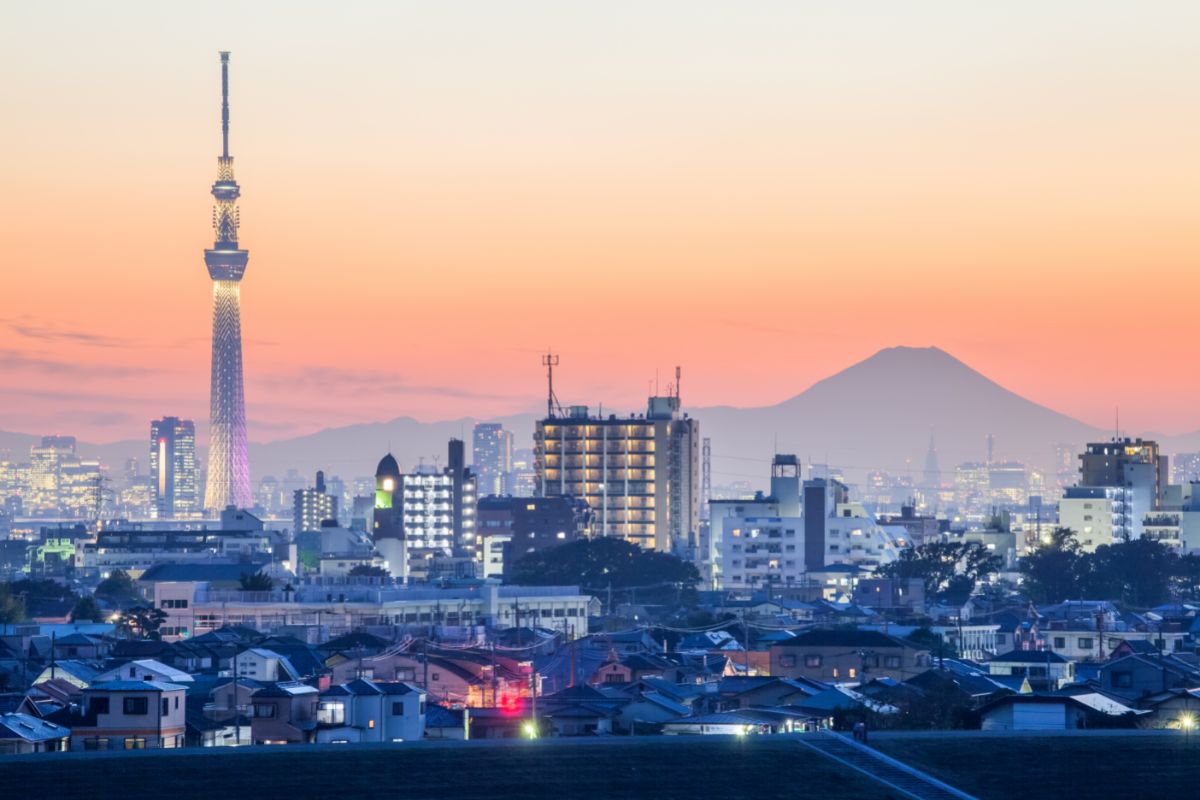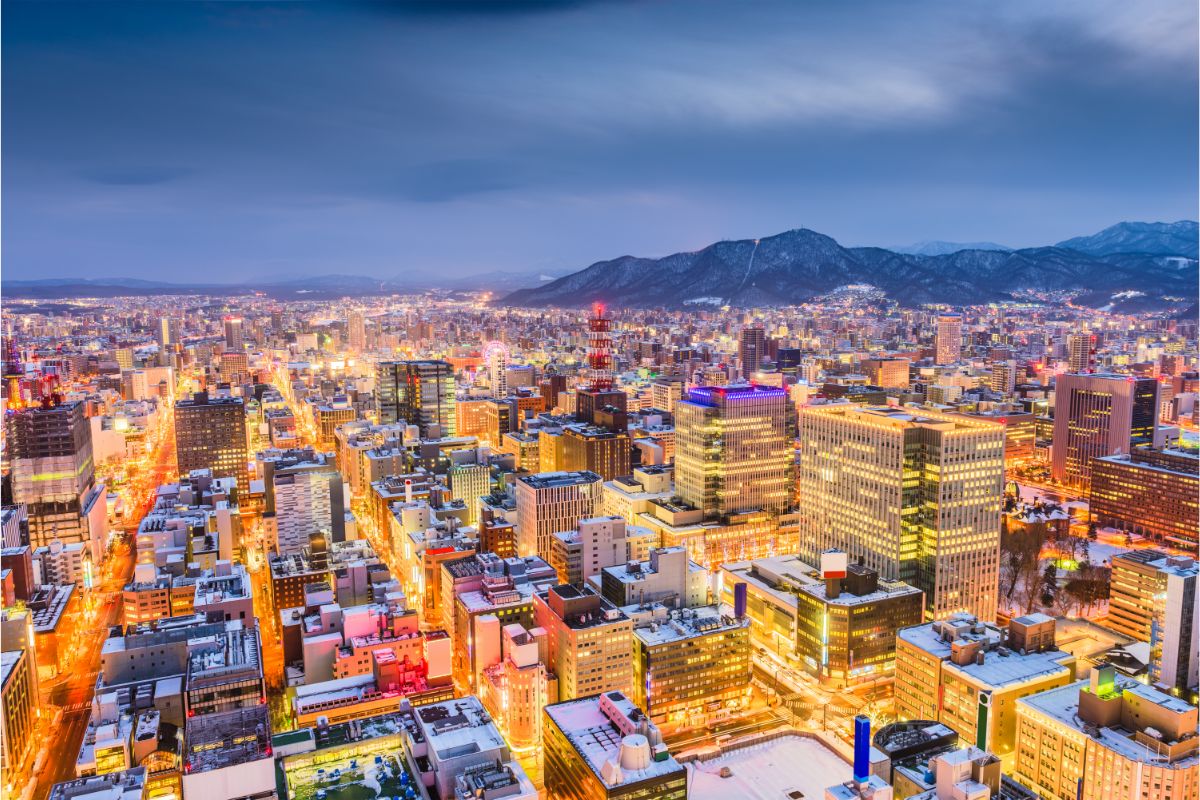Tokyo is Japan’s most visited and arguably most impressive city the country has to offer. It’s also the capital of this incredible country.
However, it hasn’t always been Japan’s Capital. In fact, it is the latest in a long list of cities that have all played their part in being the capital city of Japan in the past.

With a number of cities serving as Japan’s Capital, many people are left asking which ones were the capital before Tokyo, and why did it change?
The fact you’re here would suggest you also have those questions. If so, you’ve come to the perfect place!
In this post, we discuss which cities were Japan’s Capital before Tokyo, looking at what each city offered, and why the capital changed.
If you want to learn more about Japan or simply love everything capital city-related, make sure you keep reading.
When Was Tokyo Declared The Capital Of Japan?
Just 400 years ago, the city of Tokyo was no more than a bustling town called Edo. At this time, the Emperor of Japan reigned over Kyoto, the city that was the capital of Japan at the time.
Fast forward 400 years and Tokyo is one of the busiest, largest, and most futuristic cities in the world, never mind Japan. So what changed, and why did Tokyo become the capital of Japan?
Well, the answer may not be as complex as you might have thought. Despite many changes happening over the years, both constructionally and politically, the main reason Tokyo was declared Japan’s Capital was because The Emperor moved there.
When the Tokugawa Shogunate government ended in 1868, after almost 260 years, imperial rule was restored. In the process, The Emperor moved to Edo and renamed it Tokyo (see also ‘When Was Tokyo Renamed?‘).
It was then officially named Japan’s Capital in 1868, interestingly enough, 21 years before it was officially made a city.
Why Has Japan’s Capital City Changed So Much?
If you take a look back through Japan’s history, especially the former Yamato, you’ll quickly get lost down a rabbit hole of its official and legendary capital cities.
For many years, the capital city in Japan was believed to have changed based on wherever The Emperor lived.
Therefore, wherever the permanent seat of The Emperor was, so was Japan’s Capital. However, for historical purposes, this is a problem because the emperors of Japan loved to move around and reside in different locations, creating multiple capitals.
Luckily though, they only moved within 4 different regions. This has led to there being 4 former capitals listed in Japan’s history.
What Was Japan’s Capital Before Tokyo?
The last historical capital of Japan and the city that served before Tokyo was Kyoto. Known as the “Tranquility and Peace Capital”, Kyoto is an ancient city with great importance when it comes to Japan’s history.
Situated on the Japanese island of Honshu, it was in Kyoto that Japanese authorities decided to form a permanent seat. In fact, after many years of changing, it was the permanent seat of the authorities for 1,000 years.
During this time, the city went through great development, making it one of the most populated places in Japan in the 12th century. Over half a million people lived in the city.
Sadly, there were also times of hardship and conflict in Kyoto that also led to a lot of destruction.
Kyoto served as Japan’s capital for the duration of the shogunate period, only losing its title of Japan’s capital in 1868 when The Emperor moved to Tokyo.
Today, Kyoto (see also ‘Why Was Kyoto Removed As The Prime Target For The A-Bomb?‘) is still extremely popular. It is famous for its incredible scenery, UNESCO World Heritage Sites, and wonderful cultures.
Other Japanese Capital Cities

Despite there potentially being many, many more cities that have served as Japan’s capital, there are only three others that are considered to have truly served as the capital of Japan.
These three cities were the Capital of Japan thousands of years ago, but still played an important role in the country’s rich history. To give you an understanding of each capital city, we’ve summed each one up below.
Heijo-Kyo
Despite the first permanent seat of Japan’s rulers being formed a couple of decades earlier, Heijo-Kyo was classified as the country’s first historical capital.
Also referred to as the “Peace Capital”, which is what Heijo-Kyo stands for, this ancient city served as the capital from 710 to 740 AD and from 745 to 784 AD.
The architecture in the city was designed and constructed with great influence from Chinese construction. The city has a regular network of intersecting streets and a famous temple called Daibutsu-den.
The city lost its status when The Emperor’s seat was moved to avoid conflict.
Kuni-Kyo
Japan’s next capital city was Kuni-Kyo. Unlike Heijo-Kyo, this city only served as the capital for 4 years. This was between 740 and 744 AD. The status of Japan’s capital was then given back to Heijo-Kyo.
The city’s status was so short-lived that construction was never finished. The Emperor (Shomu), fled the city as a result of the Fujiwara no Hirotsugu rebellion.
Interestingly, The Emperor tried to return to Kuni-Kyo but was forced into declaring Heijo-Kyo as the capital once more.
Nagaoka-Kyo
Nagaoka-Kyo became the capital of Japan in 784 AD when the emperor decided to change the Japanese capital from Nara. It is believed that the thought process behind this change was influenced by the Buddhist monasteries that started to emerge nearby.
There may also have been a contender for The Emperor’s throne living in Heijo-Kyo.
This new capital was believed to be better connected to the rest of the country. This is mainly down to the city’s close proximity to the Yoda River.
Construction to build a bustling city was once again started. However, after 10 years, the capital was once again moved, leaving the city incomplete.
Final Thoughts
Japan’s capital has changed many times during the country’s history. The most recent of those changes came in 1868 when Tokyo took over the reins from Kyoto, despite Kyoto being home to the authorities for 1,000 years.
In this post, we’ve not only looked at Tokyo and Kyoto, but we’ve also looked at the other 3 cities that are classified as Japan’s capital cities, no matter how brief their service may have been.
While Japan’s capital has changed many times in the past, it is hard to see the capital changing again, particularly when you take Tokyo’s popularity, technological advancements, and population into account.
- 16 Best Websites To Watch Japanese Movies With English Subtitles - May 11, 2023
- Is ZIPAIR The Best Airline For Traveling To Japan? - May 11, 2023
- Ryu Murakami Vs Haruki Murakami – Which One Should You Read? - May 11, 2023

![20 Best Japanese Directors [And Their Most Famous Movies] 20 Best Japanese Directors [And Their Most Famous Movies]](https://justaboutjapan.com/wp-content/uploads/2023/05/20-Best-Japanese-Directors-And-Their-Most-Famous-Movies-150x150.jpg)






